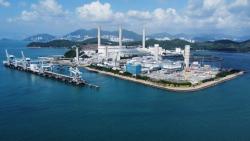
OR WAIT null SECS
© 2024 MJH Life Sciences™ and Turbomachinery Magazine. All rights reserved.
Tackling reliability problems in single stage steam turbines
A common reliability issue with single stage steam turbines is the undetected steam seal wear and entrance of condensate into the small volume bearing housings. Steam seal wear will rapidly displace bearing oil with condensate causing Babbitt-lined, sleeve bearing wear with potentially dangerous consequences. Failure to design single stage turbine steam seal systems for vacuum systems and bearing bracket oil condition monitoring bottles has resulted in frequent turbine shutdowns for seal and oil changes and catastrophic bearing failure and fires (resulting from ‘red hot’ bearing housings).
The five common problems with single stage turbines are:
Bearing bracket oil contamination (inadequate carbon ring steam seal design)
Slow governor system response (inadequate governor linkage maintenance and governor power)
Hand valve(s) closed on critical services
Bearing bracket oil viscosity reduction and bearing wear (high pressure service)
Use of sentinel valves on turbine cases
The most common reliability problem with single stage steam turbines is the contamination, with water, of the oil in the bearing housing. The root cause of the problem is the ineffectiveness of the floating carbon ring shaft seal system. Unless site systems are modified to eliminate the root cause, the best plan is to minimize the effect of the contamination so a bearing failure will not occur.
Another very common reliability problem is the slow or non-movement of the governor system linkage during start-up, and during normal operation when steam conditions change. It appears as if the governor is not responding because speed will not be controlled when it should. Typical examples are that speed will continue to increase when throttle valve is opened; turbine will trip on over speed, and speed will increase or decrease when steam conditions change and driver equipment changes.
Most single stage steam turbines are supplied with one or more hand valves in the steam chest. The purpose of the hand valves is to allow more or fewer inlet steam nozzles to be used during operation. Optimizing the steam nozzles used maintains turbine efficiency during load changes. However, the efficiency of single stage steam turbines is only 35 percent at best. Therefore, adjustment of hand valves, other than during start-up or during slow roll, should not be required.
The purpose of the jacket in the bearing housings is to cool the oil in the bearing bracket. When the steam inlet pressure is high, the heat of the steam is transmitted to the steam end inlet bearing through the shaft. Although the jacket in the bearing housing does not reduce the oil temperature in the bearing housing, it cannot effectively reduce the oil temperature at the shaft/bearing interface. This problem is a design issue. A small, single stage turbine is not provided with an oil system effective enough to remove the heat between the shaft and bearing when the turbine is operating on high temperature (400 degrees Celsius) steam. The solution is to require pressure lubrication for this application.
Naturally, it is difficult and not cost effective, to retrofit these turbines for pressure lubrication. Eliminating bearing wear and oil viscosity reduction (high pressure service) is possible by removing sentinel valves, and assuring that inlet and exhaust casings are protected by properly sized and set pressure relief valves.
Sentinel valves were used, years ago, as alarm devices to indicate that the steam turbine case (low pressure part) was under excessive pressure. These devices are not pressure relief valves and will not protect the case from failure during over pressure events. It is a known fact that sentinel valves wear, leak, and require steam turbine shutdown for repair. Most large company specifications prevent the use of sentinel valves, and require full relief-valve protection on the inlet and exhaust of all single stage turbines.
Installation of a low pressure steam educator and associated piping with a vacuum gauge from each seal leak off port will function in the same manner as special purpose steam turbine seal systems, and positively prevent the entry of condensate into the bearing housing. Installation of oil condition monitoring bottles at the bottom of each bearing bracket will allow operations to monitor bearing oil condition by observing water accumulated in the bottom of the bottle.
The best practice has been used since the mid 1990s for recommended field modifications and project requirements. Major oil companies have adapted this best practice to produce steam seal MTBFs in excess of 100 months.



